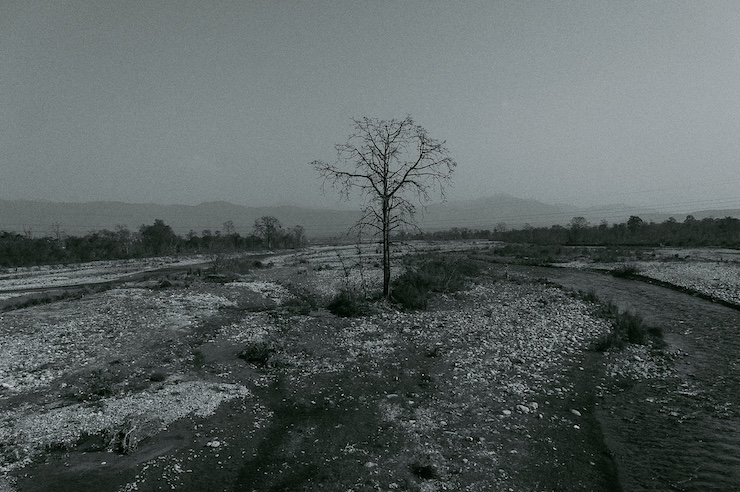In Guam, Drones Are Being Used to Reseed Devastated Landscapes

Landscapes the world over are suffering the ravages of man-made and natural disasters, leaving vast productive forests and farmland devastated and devoid of their full potential. In Guam, researchers have begun turning to sensor-equipped drones to carry out a massive reseeding of these near-desert “badlands” – and it’s beginning to make a difference.
While field planters deployed on foot can only make a small dent in the problem, and may encounter problems reaching remote mountainous terrain, drones can drop thousands of seed pods over these same areas in a fraction of the time, researchers at the non-profit Guam Restoration of Watersheds (GROW) say. Drones can also map and track the progress of the reseeding effort, making course corrections as needed. And drones can conduct all of their aerial work sustainably, avoiding further environmental harm.
The devastation to southern Guam’s once verdant landscapes didn’t happen overnight. Floods, wildfires, illegal logging and poaching, real estate development and invasive plant and insect species have all taken a toll over many years. Much of the region’s diverse wildlife has all but disappeared. Denuding of the landscapes has also taken a heavy toll on the island’s water supply. Without vegetation, soil sediment often washes downstream and causes shut-offs at the island’s main water treatment plants, which leaves villagers temporarily without water and increases the costs of maintaining water quality.
In the past, Guam has relied on field teams to hike across the area to try to reseed vast tracts of land – now little more than red clay “badlands” – by hand. It’s laborious work. The teams first have to prep the clay soil by digging holes with a drill and then must return to plant seedlings, only a dozen or so at a time. Some of the trees being planted are native to Guam but others are non-native species like nitrogen-rich acacia trees that are more likely to survive and grow strong under forbidding circumstances.
The Guam project is really just a pilot at this stage. Current efforts are focused on a 25-acre site within the Ugum River watershed, which covers an estimated 5,000 acres of land. And the GROW team only has a single drone, plus an improvised drum-like machine that can manufacture seed pods en masse. But much of the area’s once denuded landscape now features thick groves of acacia trees, GROW is anxious to acquire a large fleet of more sophisticated drones that can reseed other damaged watersheds, and then eventually expand to other islands near Guam experiencing similar problems.
Some US-based companies are beginning to specialize in drone-based reseeding. Seattle WA-based DroneSeed, founded in early 2022, conducts large-scale reforestation efforts in areas devastated by seasonal wildfires. The company deploys an entire fleet of drones – in swarms of five – that drops seedlings by air into pre-surveyed areas where soil fertility conditions have been deemed favorable. The drones are large heavy-duty aircraft eight feet in diameter with payloads of nearly 60 pounds. Currently, DroneSeed is reseeding 300 acres of forest lost in Oregon’s Beachie Creek fire back in 2020. The company’s supported by $36 million in capital from a handful of small investors, who receive carbon offsets in exchange for their contributions.
A similar effort is now under way in Australia. Sydney-based AirSeed Technologies has developed seed-planting drones that can drop 40,000 seed pods a day to restore remote, hazardous and inaccessible forest lands that were denuded by logging or by natural disasters such as wildfires. The company, which has a mission to drop 100 million seed pods in Australia by the end of 2024, says its drones work 25 times faster than human field teams. Another start-up, Biocarbon Engineering, has been deploying fleets of 10 drones to reseed deforested areas of Myanmar. The company claims to have replanted 10 million mangrove trees since 2012. Similar efforts are now underway in India, Spain and Kenya.
The world lost 4.1 million hectares of tropical primary forest in 2022, according to the World Resources Institute. That’s the equivalent of 11 soccer fields of forest per minute. A single drone can replant 60 hectares in a single day, dispersing seeds widely, out performing difficult-to-recruit and expensive field teams. On that basis, a larger drone fleet operating in a single locale could reseed over 200,000 hectares in a single year. That won’t reverse the current rate of damage overnight but in a small country like Guam, it would make a huge difference. The dramatic results achieved with drones so far suggest that it’s well worth the investment.
|